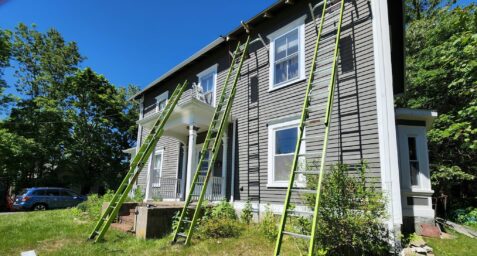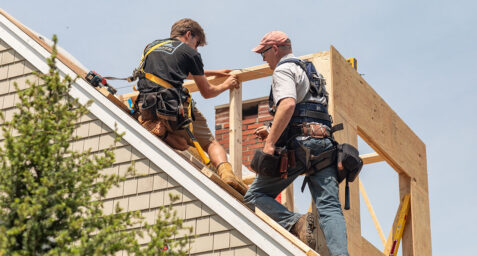Framing Community
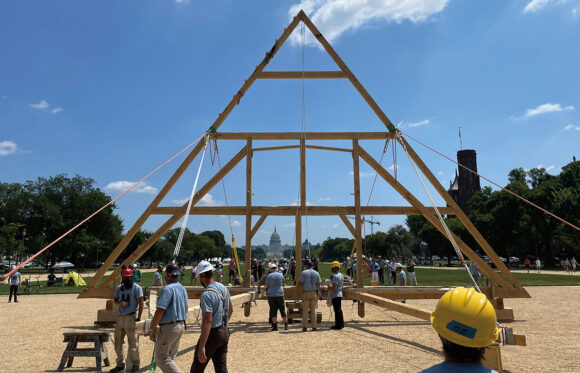
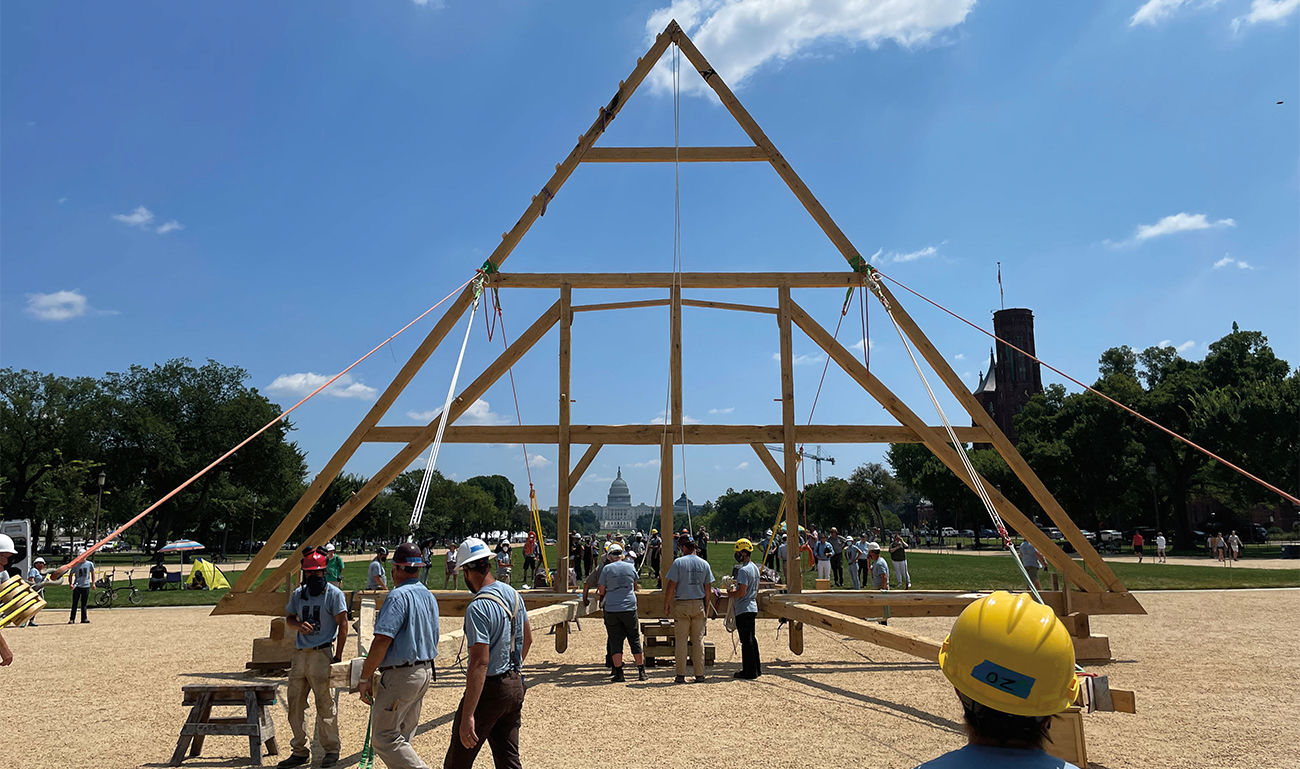
An overwhelming 200 axes of varying weights and sizes were laid out on the grassy University Mall at the Catholic University of America (CUA) one humid July afternoon. Sophie Linnell PC ’21 and her seven NBSS classmates from the second-year Preservation Carpentry program selected their tools with a mixture of nervousness and anticipation.
“We came in with very little hewing experience but were eager to learn from the masters,” she says. Earlier that year, the students had studied hewing with axes and broad axes and the 13th century French scribe joinery technique based on principles of geometry. They’d also built and raised a 12×16-foot timber-frame shed. Now they were prepared to face a steep learning curve on the ground.
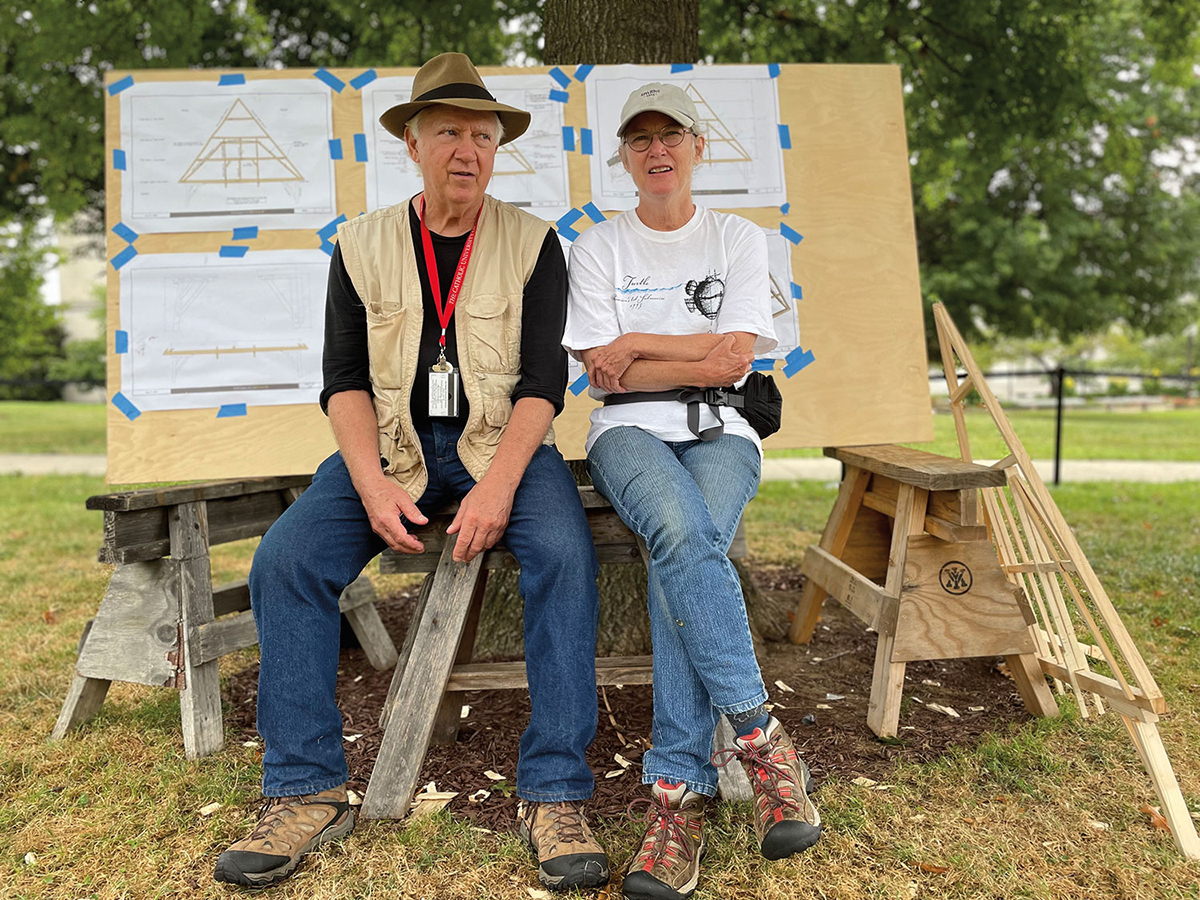
The NBSS cohort traveled to Washington, D.C. to collaborate on a 10-day Handshouse Studio workshop to reconstruct a model of the 35-foot-high truss #6 of the Notre Dame de Paris cathedral. A truss is a timber-framing term for the beams that support a roof—in this case, La Forêt, the section of Medieval French rafters that offered heavenly acoustics to the famous church’s choirs—until the cathedral tragically burned in a 2019 fire.
Laura and Rick Brown are Co-Founders of Handshouse Studio, a Norwell, Massachusetts based nonprofit that “creates projects outside of the traditional classroom that energize history through the reconstruction of large historical objects.” They watched in horror as the disaster unfolded live on their television and knew immediately that their organization had to help. “We had the idea to replicate one of the trusses that had been lost in the fire. We hoped we could even gift it to France,” says Rick.
The Browns connected with François Calame, the founder of Charpentiers Sans Frontières, a French relief organization that brings together timber-framers from around the world. Immediately, a strong partnership was born. Soon, the CUA Architecture department, The National Park Service, and the National Building Museum all got involved.
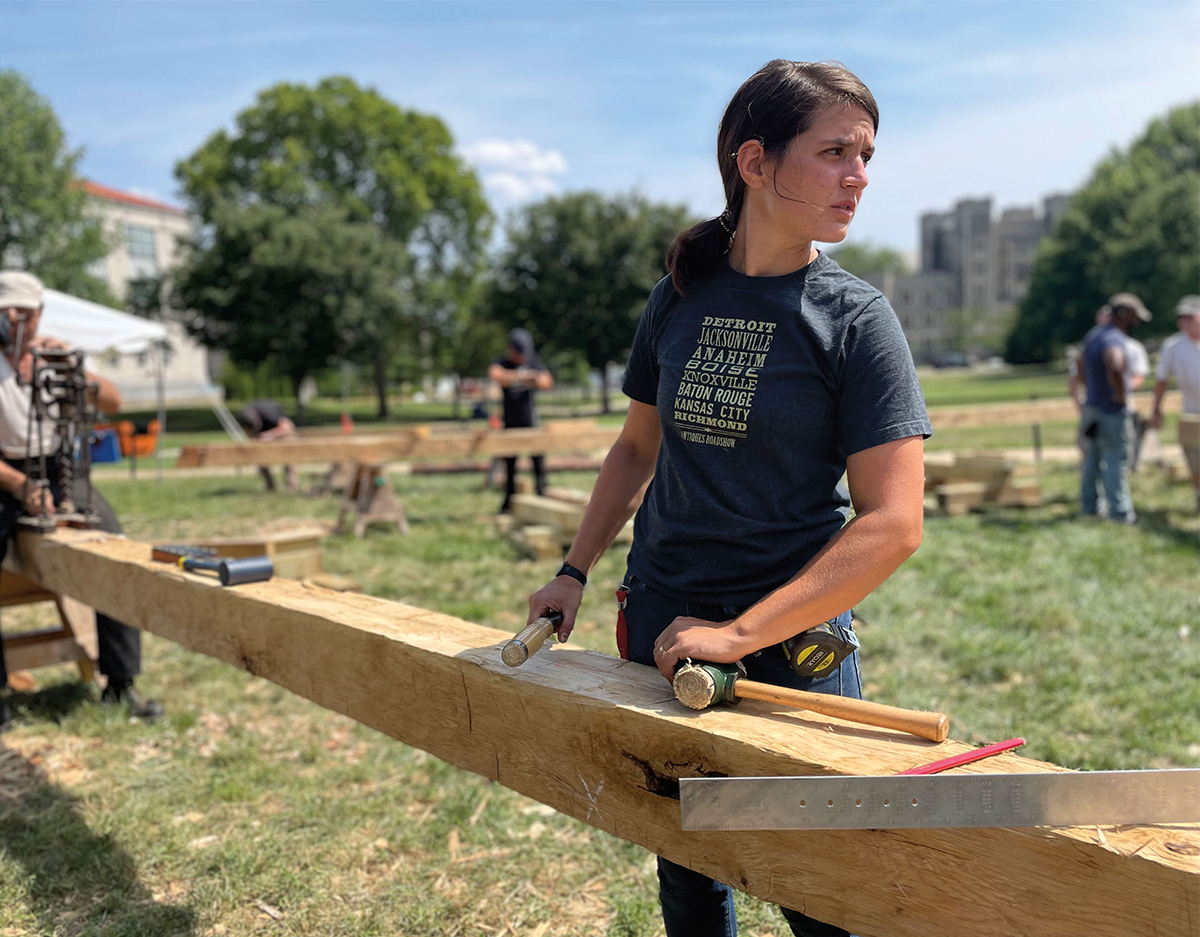
Michael Burrey, the second-year instructor for the Preservation Carpentry program, has had a long collaborative relationship with Handshouse. Laura explains, “When this project came around, we mentioned it to Michael, and he suggested that he bring the whole Preservation Carpentry class to Washington.” The NBSS delegation joined other school groups from CUA, Florida State, Washington University in Saint Louis, and the Virginia Tech Washington Alexandria Architecture Center.
The goal of the ambitious build was not only to recreate the truss, but to construct it using the same plans and traditional methods originally employed in Medieval France. That meant no electric tools or modern technology. Rick strongly believes, “This project is an opportunity for us to speak to the guilds and craftspeople of 800 years ago through the language of building. We are using their techniques, tools, and materials.”
Sophie, who brings a background as both a sculptor and stonemason to her trade, describes the workshop experience as both “rigorous and intense.” Thirty massive white oak logs sourced in Lexington, VA first had to be meticulously hewed, laid out, and scored with felling axes. Next came joggling, where five participants teetered shoulder to shoulder atop each log. “You’re standing on top of the timber, and with axe in hand, you remove the waste material between the notches you’ve created,” she explains.
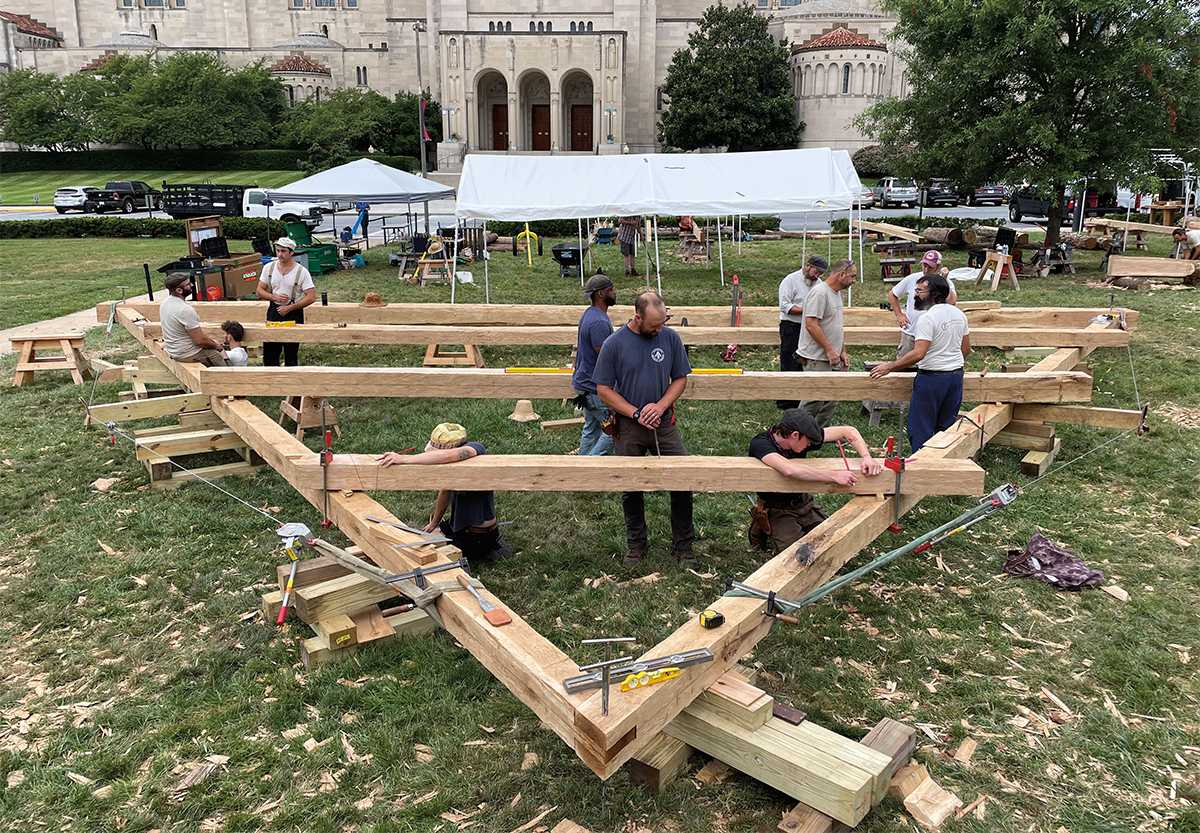
Because metal nails were not yet common when the original truss was constructed, the group connected the beams using hand-carved mortise and tenon joinery. There was a lot of tool and method sharing along the way. “It was a beautiful conglomeration of different ages, disciplines, and backgrounds working in concert for a unified purpose,” says Sophie.
The truss was hand-raised and displayed on the grounds of the Basilica of the National Shrine of the Immaculate Conception. It was next moved to The National Mall for public viewing, and then installed and displayed inside the National Building Museum. It currently rests in storage in Lexington, VA waiting to tour other regions of the country. Michael is hopeful that other NBSS students will have the opportunity to travel to Washington, D.C. to build another truss in the Summer of 2022.
But he believes the impact on students from any build far transcends the raising of a truss: “The main takeaway was the chance to interact with timber framers and practitioners of the craft who’ve been out in the field for decades. The exchange of information that happened will be long-lasting.”
The main takeaway was the chance to interact with timber framers and practitioners of the craft who’ve been out in the field for decades. The exchange of information that happened will be long-lasting.
Henry Newhard PC ’21 couldn’t agree more. Thanks to the experience of working onsite, he’s decided to focus on timber-framing as much as possible moving forward. “I definitely had an interest in it, but I wasn’t sure if the path was there,” he explains. “And then immediately, within the first day of being in Washington, D.C., I realized that this is something I want to continue to do.”
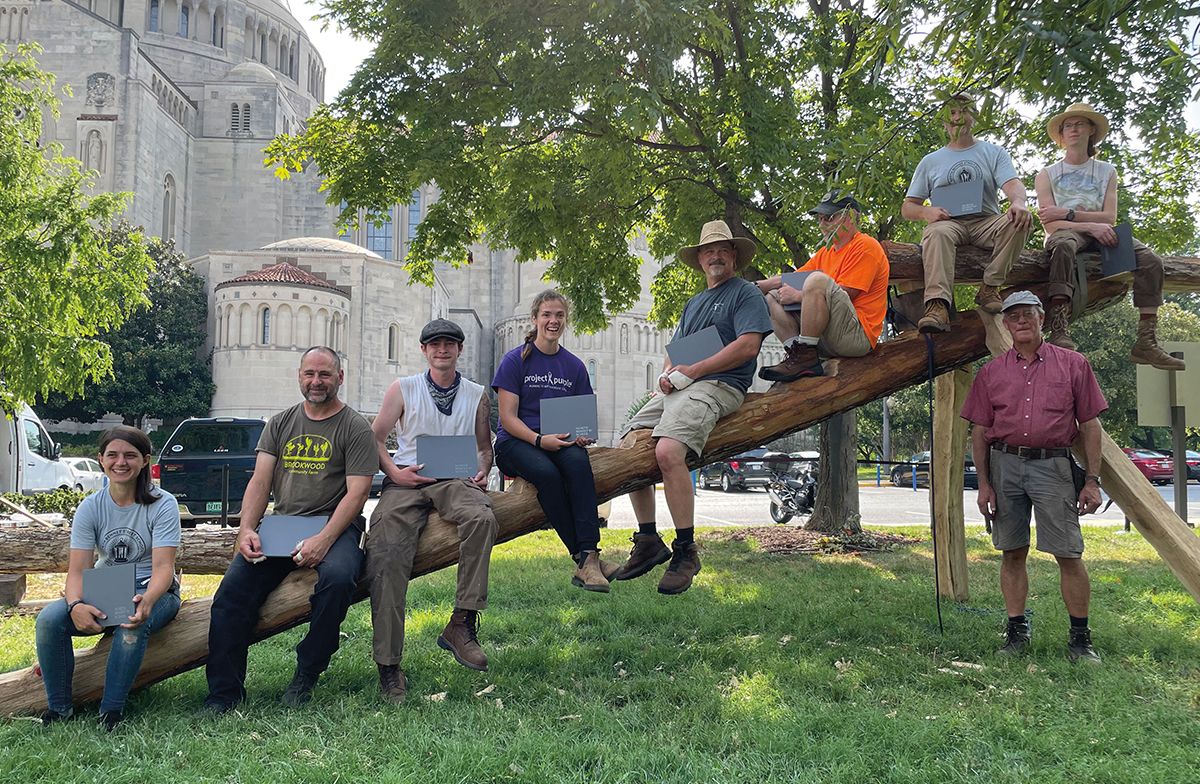
The moment the truss was raised on the CUA Mall was equal parts nerve-wracking and breathtaking. Henry says, “It was all blood, sweat, and tears just to see it stand. Everybody worked together to pull it up with ropes, pulleys, and a whole lot of rigging.” He participated on the 20-person installation crew at all three locations and was given the honor of placing the wetting bush at The National Building Museum. The timber framers’ tradition involves affixing a green bough to the peak of a truss to recognize the logs and labor that went into building, and to honor the people who will use the structure.
For Henry and his classmates, the capstone moment coincided with their own NBSS graduation which they viewed remotely on a laptop propped up on a pile of rolled blueprints from a corner of the project site. The ceremony felt poignant because it symbolized a meaningful induction into the trades community. Henry sums it up best: “The entire time, my class was working alongside all these professionals and veterans in the field. I’m lucky enough to say now that I have over 30 new contacts—and many good friends because of the project.”
This article is from our 2021 Annual Report. Read more stories from the issue or view more issues here.
